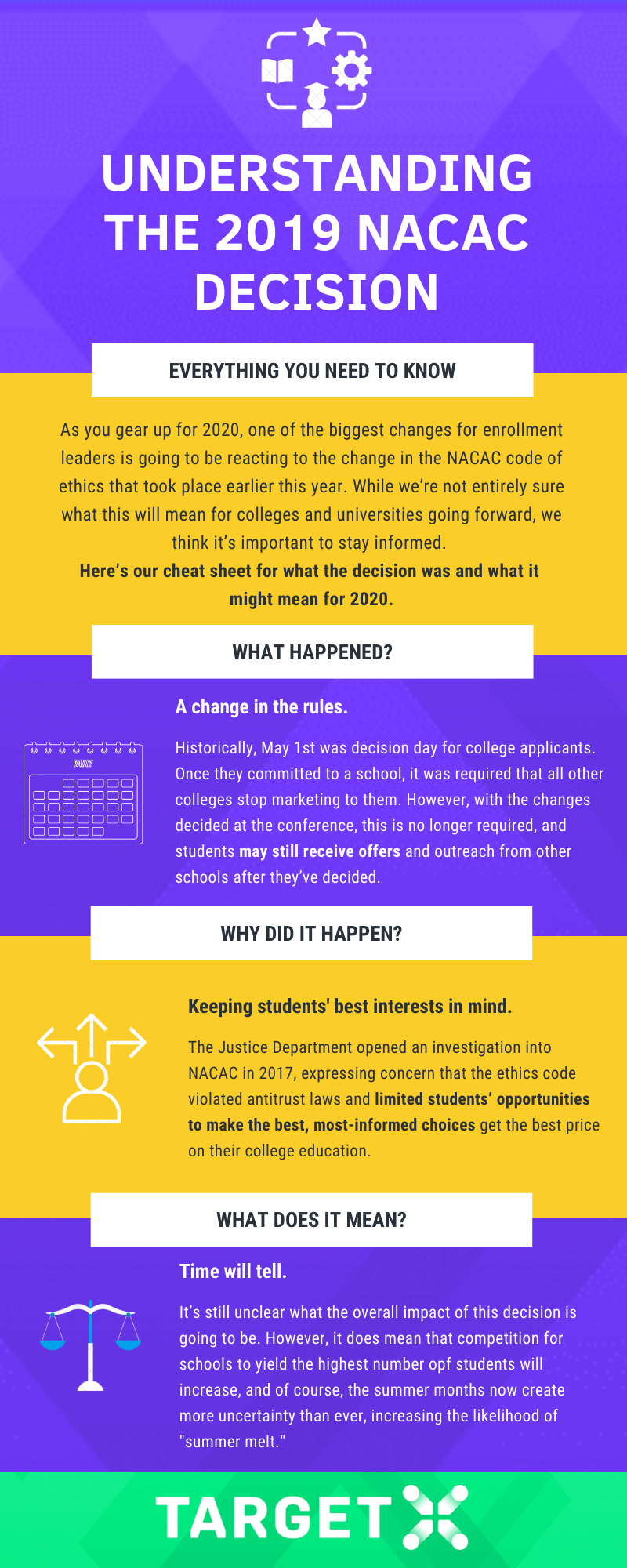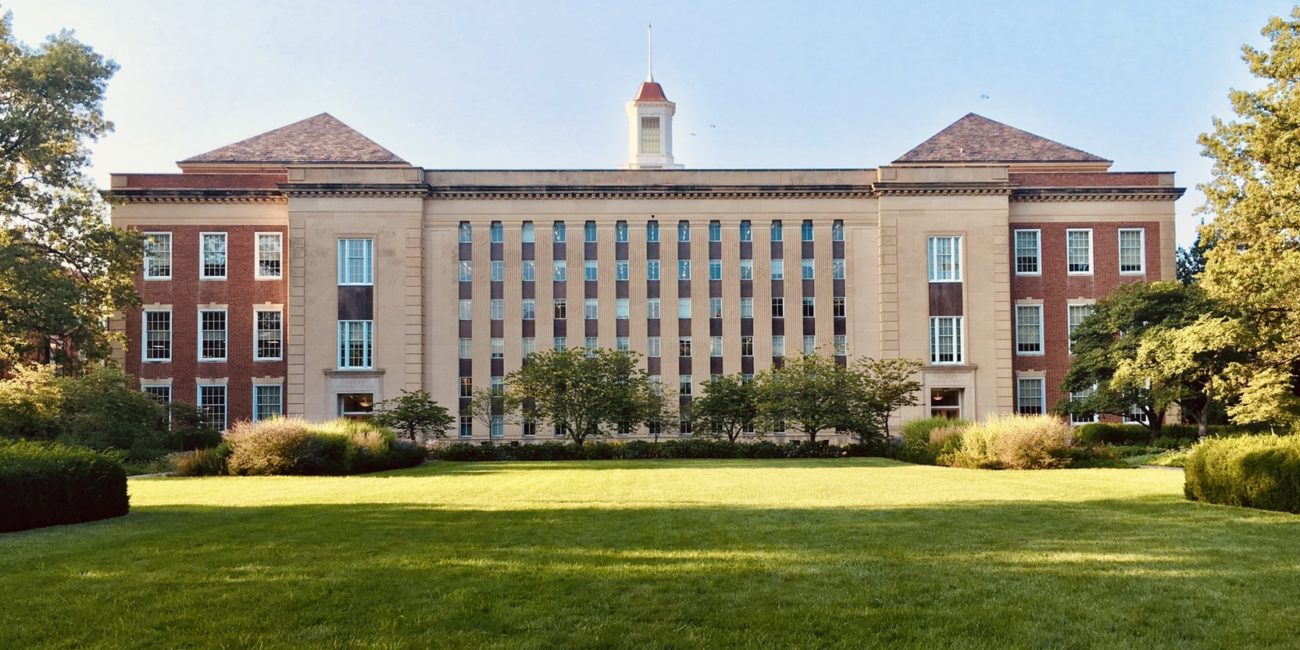We predict that one of the biggest challenges for enrollment leaders in 2020 will be reacting to the change in the NACAC code of ethics that took place earlier this year. In case you missed it, at their annual conference, the National Association for College Admission Counseling (NACAC) announced that they would change their code of ethics following an investigation by the Department of Justice.
The world of higher education has been buzzing with the news of this decision since it was announced at the end of September, but many people are still wondering what it all means. To help make sense of a major change in the world of college admissions, we put together your need to know guide to the announcement — and what it might mean for the enrollment world in 2020.
What happened?
Historically, May 1st marks decision day for college applicants. Once a student submitted their decision and committed to a school, it was required that all other colleges stop marketing to that student. However, the Department of Justice found that this practice limited students’ choices. With the changes made at the NACAC conference, this is no longer required, meaning students will still receive offers and outreach from other schools, even after they’ve officially committed. This makes competition fiercer and engagement with prospects — even after they’ve committed — more important than ever before.
Why did it happen?
In November of 2017, The Justice Department opened an investigation into NACAC, expressing concern that the ethics code violated antitrust laws and limited students’ opportunities to make the best, most-informed choices and get the best price on their college education.
While NACAC members don’t believe that the DOJ was correct in its assessment, President Stefanie Niles explained that they chose to repeal the pieces of the code of ethics through their desire to “preserve the organization.” However, Niles stressed that just because NACAC revoked its rules on early decision and non-poaching, that does not mean that colleges have to drop the rules. Ohio Wesleyan, for example, will continue to observe the rules, she said.
What Does the Decision Mean?
From our perspective, it’s still unclear what the overall impact of this decision is going to be. However, it does mean that colleges can now continue their marketing efforts to students who have already committed to a school on May 1st. The new rules also allow schools to offer scholarships and financial aid after the May first decision date which could be a game changer for many students, and something that could have a huge impact on the industry as a whole.
Most obviously, this shift makes it more important than ever before to build the connections with your prospective students and continue to engage with them well after that May 1 deadline. And of course, the summer months now create more uncertainty than ever for schools hoping to yield the highest possible number of students, and the potential for “summer melt” also increases.
Your Cheat Sheet:
We know that these changes are going to impact offices across campus from admissions and enrollment to marketing. And while there’s a lot out there about this topic, it can be hard to pin down what this actually means. That’s why we created this handy cheat sheet for you to review and share with your colleagues:

